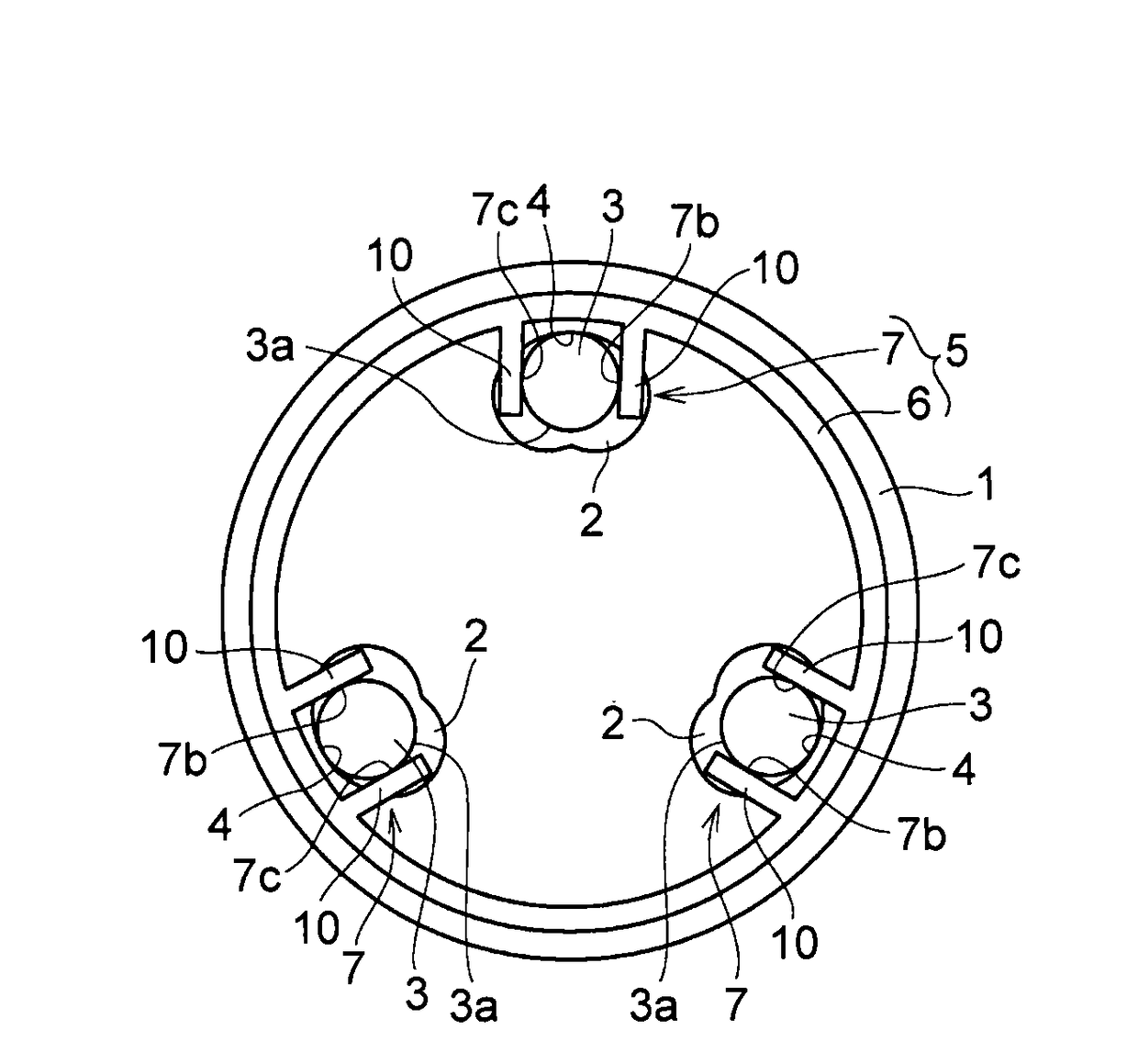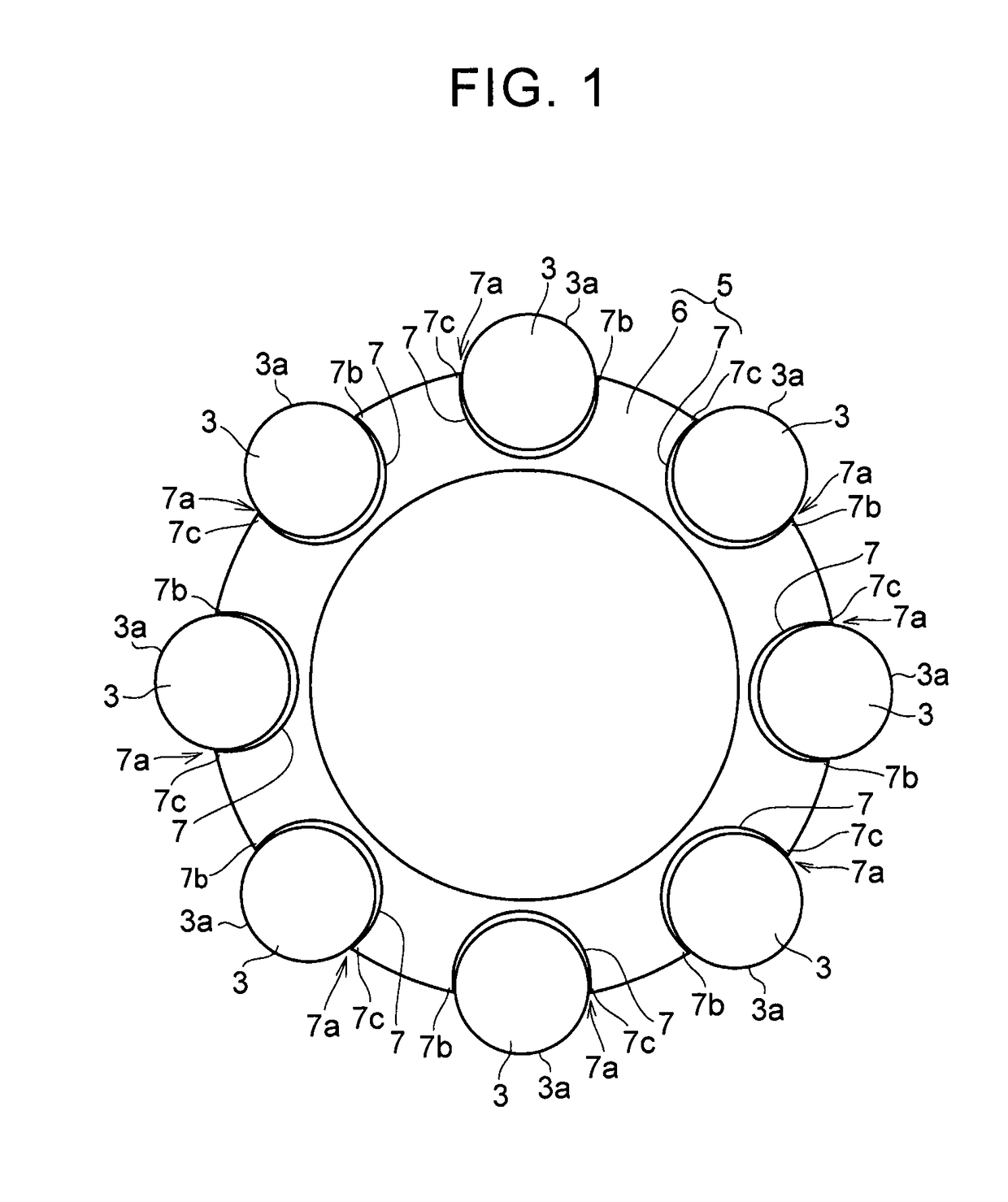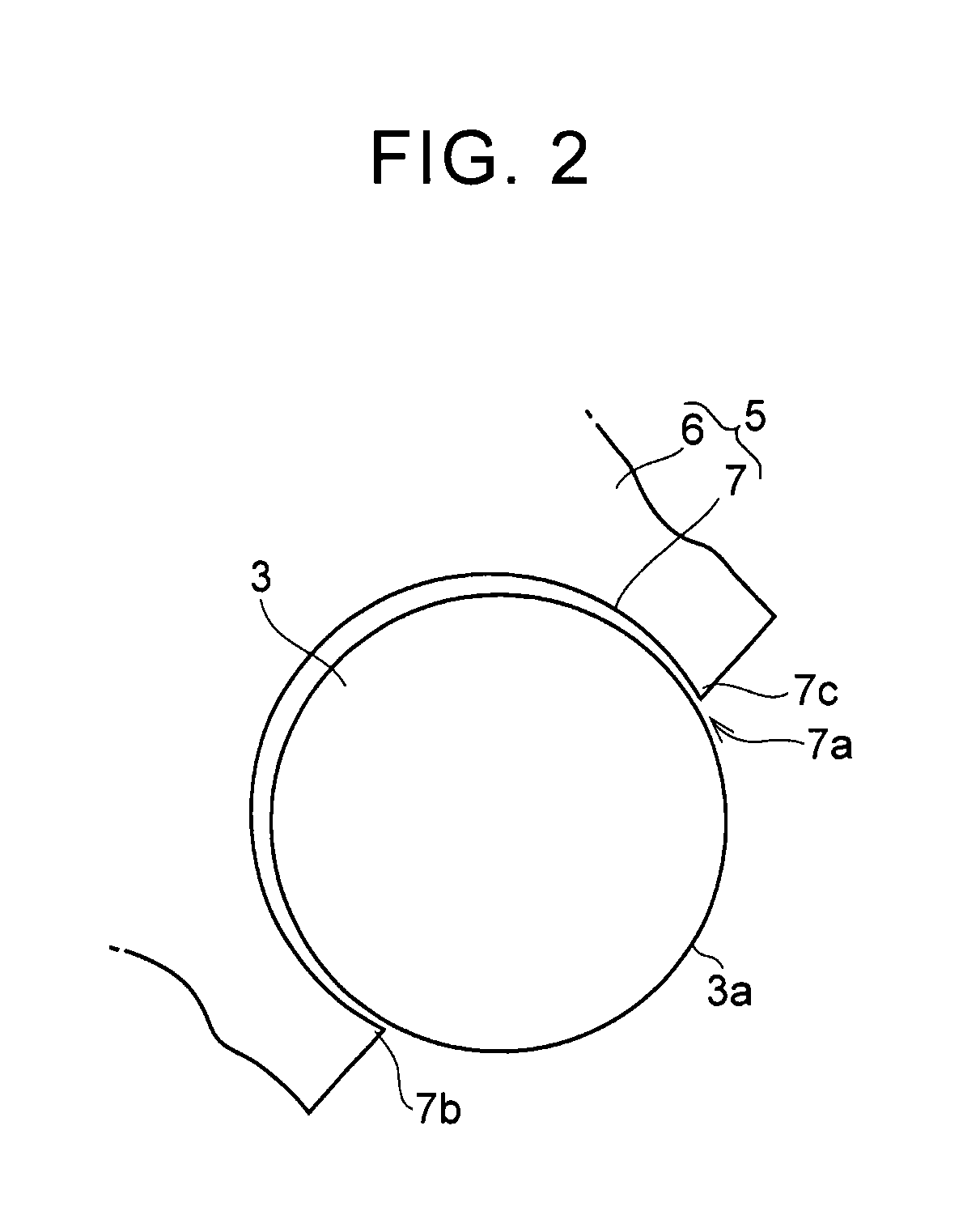Torsional vibration reducing device
a torsional vibration and reducing device technology, applied in the direction of spring/damper, rotational vibration suppression, vibration suppression adjustment, etc., can solve the problem of possible deterioration of damping performance, reduce sliding friction, and improve damping performance.
- Summary
- Abstract
- Description
- Claims
- Application Information
AI Technical Summary
Benefits of technology
Problems solved by technology
Method used
Image
Examples
first embodiment
[0027]FIG. 3 is a sectional view illustrating a portion in one example of a torsional vibration reducing device according to a first embodiment. The torsional vibration reducing device includes a rotating body 1 that is attached to an object to be damped. The rotating body 1 is a disk-shaped member. Circumferentially-long guide holes 2 are formed at positions radially shifted from the center of rotation of the rotating body 1. The guide holes 2 are formed passing through the rotating body 1 in a plate thickness direction. The guide holes 2 are positioned at predetermined intervals in a circumferential direction of the rotating body 1. As one example, eight guide holes are provided. The guide holes 2 have a shape formed by curving an oval shape or an elliptical shape.
[0028]A rolling body 3 that reciprocates by an inertial force when torque transmitted to the rotating body 1 fluctuates is inserted into each of the guide holes 2. The rolling body 3 is pressed against an inner surface o...
second embodiment
[0037]FIG. 4 is a sectional view in the rotating body radial direction illustrating a portion in one example of a torsional vibration reducing device according to a second embodiment. The example shown therein is an example in which the connection members 5 are disposed on the inner side of the rolling body 3 in the radial direction of the rotating body 1 and on the opposite end portion sides of the rolling body 3 in the axial direction. In a configuration shown in FIG. 4, a load associated with contact between the outer peripheral surface 3a of the rolling body 3 and the connection members 5 is applied to the opposite end portions of the rolling body 3 in the axial direction. Therefore, the rolling body 3 can be more stably reciprocated than the example shown in FIG. 3, so that the damping performance is further improved.
third embodiment
[0038]FIG. 5 is a view illustrating one example of a connection member according to a third embodiment. In the example shown in FIG. 5, the three guide holes 2 are formed at predetermined intervals in the circumferential direction of the rotating body 1. The support portion 6 in the connection member 5 has a Y shape. The support portion 6 is formed such that free end portions are positioned corresponding to the guide holes 2, respectively. The accommodating portions 7 having the opening portions 7a that open outward in the radial direction of the rotating body1 are provided at the free end portions, respectively.
PUM
 Login to View More
Login to View More Abstract
Description
Claims
Application Information
 Login to View More
Login to View More - R&D
- Intellectual Property
- Life Sciences
- Materials
- Tech Scout
- Unparalleled Data Quality
- Higher Quality Content
- 60% Fewer Hallucinations
Browse by: Latest US Patents, China's latest patents, Technical Efficacy Thesaurus, Application Domain, Technology Topic, Popular Technical Reports.
© 2025 PatSnap. All rights reserved.Legal|Privacy policy|Modern Slavery Act Transparency Statement|Sitemap|About US| Contact US: help@patsnap.com



